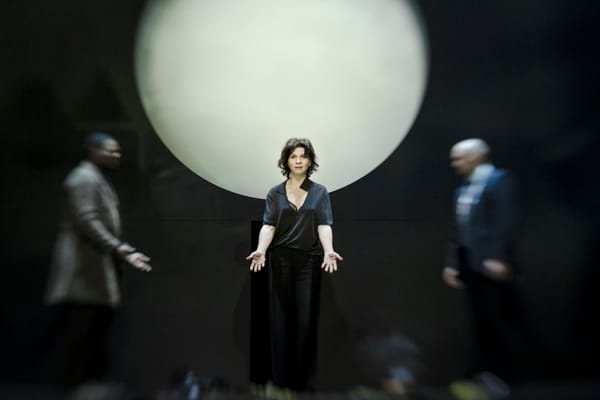Comic Books: Where to Start?
A fan of comic books, but not sure which ones to go for next? Never fear! Cale Tilford is here to take us on a journey through five of his current favourite comic series, perfect for those unacquainted with the art form
The Wicked + The Divine
The Wicked + The Divine was once described as the spiritual successor to Kieron Gillen and Jamie McKelvie’s Phonogram, the Britpop inspired comic series ‘where music is magic’, and whilst it borrows many of the themes of their earlier collaboration this series is far more grounded in reality.
Set in a world where every ninety years twelve humans are incarnated as gods with two years left to live, their new work examines the modern celebrity and the associated fandoms.
Now in its second arc, the series continues to explore this world through the perspective of British teenager Laura, one of the many hardcore fans of the group of gods known as The Pantheon.
Gillen’s fondness of British (and American) music is what really brings his world to life, with each God borrowing their identity from a rock or pop icon.
For example, Lucifer (or Luci) styles herself as a female Bowie. Other gods take inspiration from musicians such as Daft Punk or Rihanna, and it’s not often not just their image that they share – Gillen writes many of these characters in such a way that they channel the personality of the celebrity that they embody. The series is also littered with pop culture references and song lyrics which will be immediately familiar to those who have grown up listening to Britpop’s finest.
Jamie McKelvie’s art is some of the best in the industry. His realistic style helps create an astonishingly believable world, and his work on facial expressions adds further emotion to Gillen’s excellent script. _The Wicked + The Divine _is particularly renowned for its eye catching cover designs, which so far have exhibited McKelvie’s excellent character designs for each of the twelve gods in turn.
My only complaint with this series, which I feel is common with much of Gillen’s work, is that the dialogue is often too confusing (and culture reference heavy), requiring you to be fully immersed in the rapidly expanding world that he is constructing. Once invested though, The Wicked + The Divine is a world you’ll never want to leave.
The Wicked + The Divine #8 is out now on Image Comics.
Descender
Finally free from his contractual obligations at DC Comics, Jeff Lemire starts his career at Image with one of his most interesting concepts yet. Descender takes place in the far future where, after a series of unfortunate events, all artificial intelligence has been banned. Success seemed inevitablae for the creative team after Sony secure the film rights to the series before its first issue had even been released, and this gamble might just pay off as the first issue is easily one of the best so far this year.
Lemire tells the story of the last robot in the galaxy, a young android named TIM-21, as he is hunted down by those who blame his kind for their destruction in a disaster that wiped out billions of lives. The major events in the first issue unfold from the perspective of Dr. Quon, a once leading scientist whose job is made obsolete after AI is outlawed. Ten years after the disaster that ravaged the core planets, his services are required again when TIM-21 omits a signal that alerts the galaxy of his presence. With AI very much a hot topic at the moment (from Ex Machina to the scaremongering comments of Elon Musk and Steven Hawking), it’s interesting to see Lemire join the discussion with a tale that so far feels very reminiscent of Spielberg’s A.I. Artificial Intelligence.
Never before have I been so blown away by the art in a comic. Dustin Nguyen’s work with watercolours is phenomenal and is a good enough reason alone to pick up this series. In the first issue, we get a glimpse of a number of different environments each of which Nguyen is able to distinctively portray through his excellent use of colours and perspective. The most notable of these is a moon where the bluish greys of an abandoned mining colony are contrasted against the darkness of space, reflecting the loneliness of the comic’s young protagonist.
Descender is a triumph and solidifies Lemire as one of the best talents in the industry. I can’t wait to read the next issue.
Descender is out now on Image Comics.
## Howard the Duck
I’ll admit that even as a big comic fan, I’d never heard of Howard the Duck until its brief cameo in last year’s Guardians of the Galaxy post-credits scene. This new series from Chip Zdarsky (most famous for his work illustrating dildo-fights in Image Comics’ Sex Criminals) follows Howard, a handsome anthropomorphic duck, as he explores a world “he’s grown accustomed to.”
After the first few pages it’s apparent that this comic is about far more than a talking duck – Zdarsky uses Howard’s role as a private investigator to position him as an outsider in the Marvel universe. The witty and often hilarious dialogue pokes fun at the fictional world around him and the wonderful inconsistencies that have been allowed to fester over time. If you’re expecting something along the same lines as Sex Criminals you’ll be disappointed, but Zdarsky’s first major attempt at writing certainly provides laughs, although it’s often at the expense of the well-established universe that Howard the Duck is part of.
Joe Quinones’ art is fantastic at displaying the varied emotions of the duck detective and his super-powered friends; his modern style is complemented well by Rico Renzi’s bright colours, and the work on Howard’s outfit feels appropriately retro, furthering the idea that he is out of time, in a world that is not his own.
With a first issue packed full of cameos and clever references, it will be interesting to see if the character of Howard the Duck alone will be enough carry the series in its future issues.
Also, with the upcoming demise of the multiverse (in this year’s Secret Wars event) I’m curious as to where Howard the Duck will end up, especially since Marvel have a history of ending series before they reach their prime.
Howard the Duck #1 is out now on Marvel Comics
## Spider-Gwen
The recent Spider-Verse comic event introduced a number of new superheroes to the Marvel multiverse. The most popular of these was Spider-Gwen, the Spider-Woman/Gwen Stacy of Earth-65, who is forced to face off against her own reality’s version of Peter Parker when he mutates into a lizard-like creature.
Jason Latour subverts many of the archetypes in Spider-Man origin stories, with Spider-Gwen feared as a dangerous vigilante by her community rather than the usual friendly neighbourhood Spider-Man. It’s great to see a creative team that’s attempting to try something different, and with Spider-Gwen Latour has written a character with a surprising amount of depth. This alternative take on Gwen Stacy is nothing like her counterpart in the mainline Marvel universe – she’s badass and the drummer for the fantastically named punk rock band ‘The Mary Janes’.
Robbi Rodriguez’s thin lines are able to capture the fast-paced and frantic movements of Spider-Gwen and her foes, whilst his use of caricaturistic body and facial structures works well to display the truly villainous nature of the tales’ antagonists. Unlike many of his peers, who have moved away from comic sound effects, Rodriguez uses them to great effect, effortlessly blending them in with his art and Rico Renzi’s garish colours.
It is therefore unfortunate that I can only recommend this comic to those who have already invested some time in the current Marvel comic universe. To fully appreciate and understand the first few issues you must possess at least a basic knowledge of Spider-Man enemies and allies. Furthermore, it is worrying when certain aspects of a character, such as their origin-story, are not explained. Whilst Spider-Gwen #1 and #2 at least attempt to summarise Spider-Gwen’s story so far, they fall short of giving a necessary introduction to new comic book readers.
## Silver Surfer
Most will know the Silver Surfer from his appearance in the spectacularly shit 2007 film, Fantastic 4: Rise of the Silver Surfer, which continues to haunt many Marvel fans to this day. Luckily, Dan Slott’s portrayal of this character does far more justice to one of Stan Lee and Jack Kirby’s finest creations. Already on its tenth issue, the series continues to provide excitement and oddity only rivalled by Doctor Who. Each issue explores a different part of Marvel’s expansive universe with Norrin Radd (AKA the Silver Surfer) and his earthly companion Dawn Greenwood as our guide.
For those not familiar with the Silver Surfer, the silver-clad humanoid is the former herald of Galactus, a massive planet-consuming cosmic entity, and rides a silver surfboard across the cosmos. As a herald, he was tasked with scouring the galaxy to find suitable planets for his master to destroy, however, upon reaching Earth he was so inspired that he turned against Galactus to save the planet from destruction.
The current arc examines the Surfer’s past relationship with his planet hungry master and the looks at the impact he has had across the galaxy. Responsible for the deaths of billions, it’s interesting to see the Surfer come to terms with the damage he has caused. It’s rare that we get something of such emotional gravitas in a superhero comic, so I commend Slott for his effort.
Michael and Laura Allred combine to provide their best work yet; the pop-art style that the couple is so famous for is a perfect match for the Slott’s impressive imagination. Each new creature and planet that is introduced seems more wacky and inventive than the last, and when Galactus is finally revealed his entrance is as epic as hoped.
Silver Surfer is a comic that needs to be read; it’s fun, light-hearted, and easy to follow. If you’re a fan of exploratory sci-fi then this is the comic for you.










